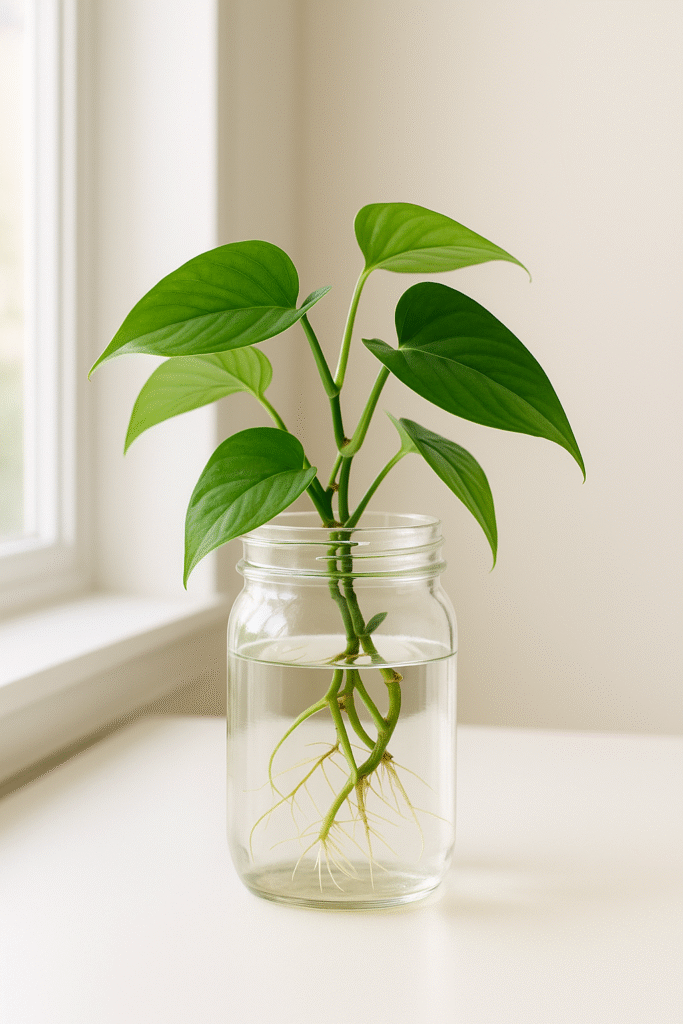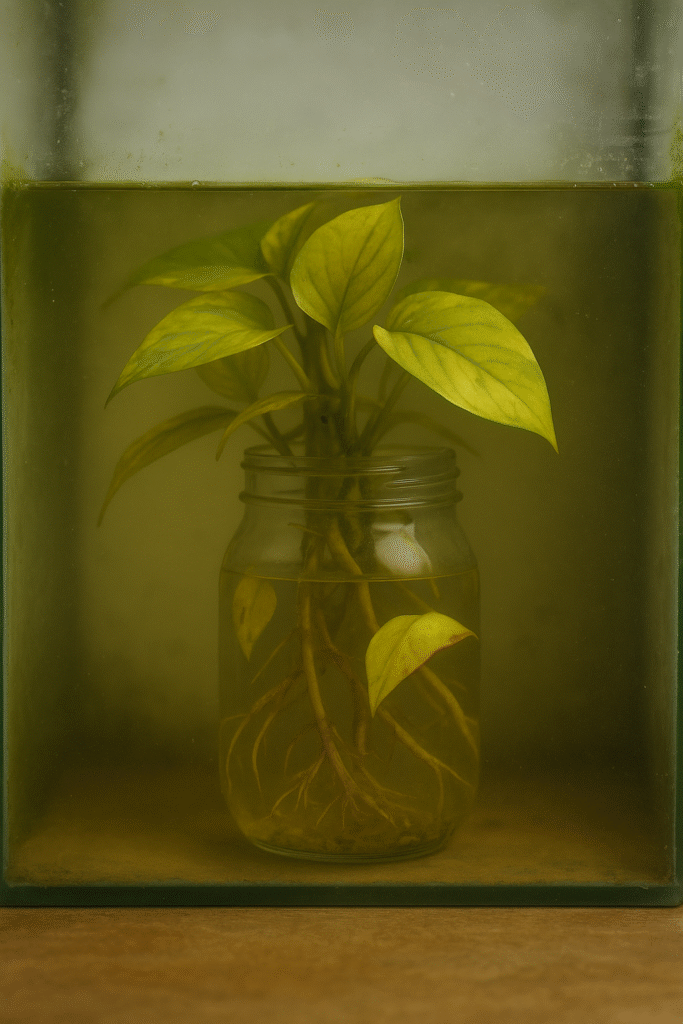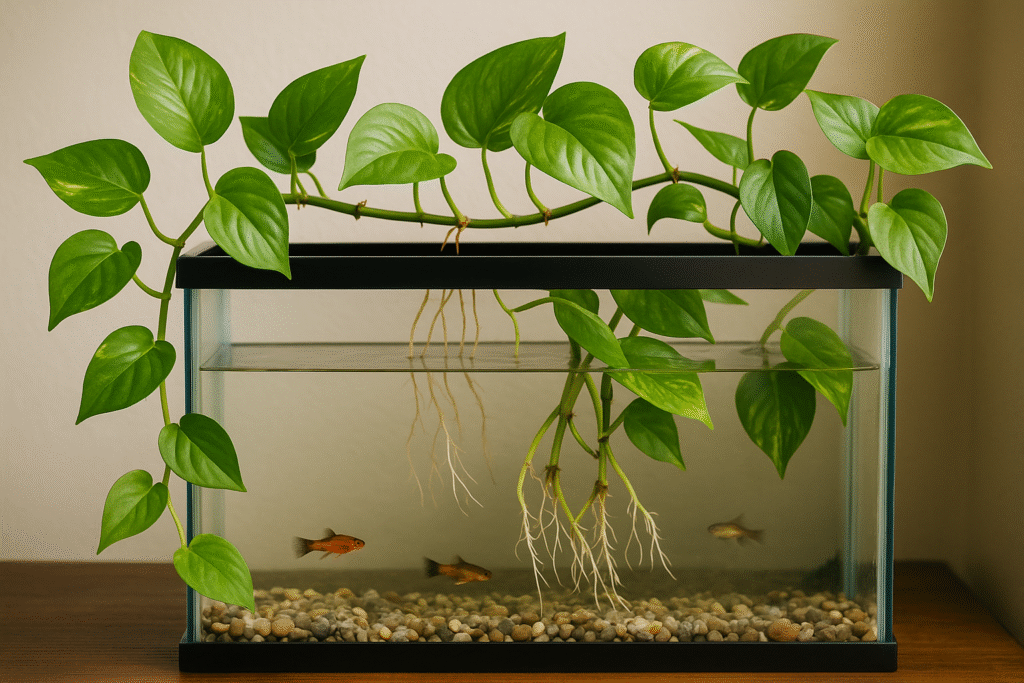Can Pothos Be Fully Submerged? What Every Plant Lover Should Know About Underwater Growth

Introduction
Pothos is one of the most forgiving and beginner-friendly houseplants out there. You can grow it in soil, water, or even hang it in a dim corner—and it just keeps going. But here’s a curious question many plant lovers ask:
Can pothos be fully submerged in water?
With the rise of indoor aquariums, aquascapes, and creative hydro displays, the idea of growing pothos underwater is gaining traction. But is it a good idea—or a fast track to root rot? Let’s break it down.
Why Pothos Is Such a Hardy Houseplant
Pothos (Epipremnum aureum) is native to Southeast Asian rainforests, where it naturally trails along forest floors or climbs tree trunks. It’s known for:
- Tolerating low light
- Thriving in both soil and water
- Requiring minimal care
- Purifying indoor air
Because of its toughness and versatility, many assume it can handle anything—even being fully submerged in water.
But that’s not quite true.
Can Pothos Be Fully Submerged in Water?
❌ Short Answer: No, not for long-term growth.
While pothos roots love water, the rest of the plant—especially stems and leaves—can’t handle constant submersion. When you fully submerge a pothos, you’re cutting off its access to oxygen and creating the perfect conditions for rot.
Pothos is not a true aquatic plant. It is semi-aquatic at best.
✅ Safe method: Only the roots and nodes should be underwater. Keep stems and leaves above the waterline.
What Happens If You Submerge Pothos Completely?

If you place an entire pothos plant underwater—leaves, stem, and all—here’s what’s likely to happen:
- Within a few days: Leaves will start to yellow or go limp.
- Within a week: Stems may become soft or mushy.
- By the second week: Root rot sets in, bacteria grows, and the whole cutting may collapse.
💀 Reason? No oxygen. Submerged parts start to break down in anaerobic (low-oxygen) conditions.
How to Grow Pothos Safely in Water
The good news? Pothos does great in water—as long as you follow a few simple rules:
🌱 Basic Setup:
- Use a glass jar, vase, or container.
- Cut a healthy vine with at least one node.
- Remove leaves that would sit in the water.
- Submerge the node only.
- Place near bright, indirect light.
- Change the water every 1–2 weeks.
This way, the plant gets the hydration it needs, without risking rot.
Aquarium Use: Can Pothos Be Used in a Fish Tank?
Yes—with precautions.
Pothos is often used in aquariums and aquascapes because of its long trailing vines and water-purifying abilities.
🐠 How to Use Pothos in a Fish Tank:

- Place cuttings in a hang-on-back filter or clip to the side so only roots are submerged.
- Let the leaves stay above the waterline.
- Roots will absorb nitrates from fish waste—helping clean the tank.
⚠️ Important: Pothos is toxic if eaten by some fish and pets. Always check compatibility before introducing it to a tank.
Tips to Keep Water-Grown Pothos Healthy
✔️ Change water every 1–2 weeks to avoid stagnation
✔️ Use filtered or dechlorinated water for best results
✔️ Trim dead leaves before they rot
✔️ Avoid direct sun to prevent algae in the container
✔️ Add nutrients every 4–6 weeks (optional)
Creative Ways to Display Pothos Without Full Submersion
You don’t need to submerge pothos to enjoy a stunning display. Try these Pinterest-worthy ideas instead:
- Mason jars on a windowsill
- Test tubes mounted to a wood board
- Glass bulbs hanging from a ceiling hook
- Aquarium corner setups with trailing vines
- Hydroponic stands with visible root systems
Let the roots swim while the leaves shine 🌿
Conclusion
So—can pothos be fully submerged?
The short answer is no. While pothos is incredibly adaptable, it can’t survive being completely underwater for long. The leaves and stems need access to air, and only the roots should be submerged.
For the best results, try semi-hydro or rooted water displays, aquarium add-ons, or test-tube propagation walls. You’ll get all the beauty of pothos—without the rot risk.
💬 Have You Tried It?
Have you experimented with growing pothos near or in water? Share your setup and tips in the comments—we’d love to feature your creative plant displays in our next article!